Top speed 241 km/h Wingspan 22 m Engine type Pratt & Whitney T73 First flight 1962 | Range 370 km Length 27 m | |
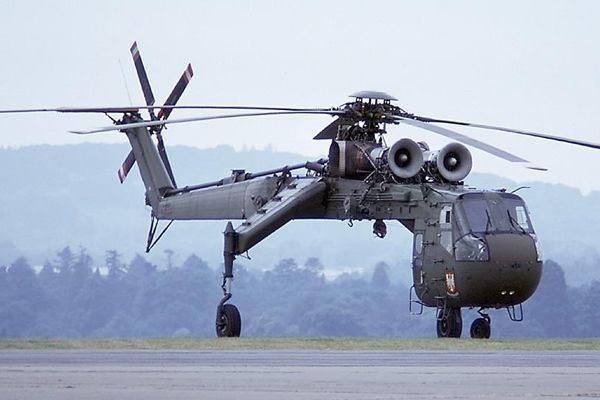 | ||
Sikorsky ch 54 tarhe
The Sikorsky CH-54 Tarhe is a twin-engine heavy-lift helicopter designed by Sikorsky Aircraft for the United States Army. It is named after Tarhe (whose nickname was "The Crane"), an 18th-century chief of the Wyandot Indian tribe. The civil version is the S-64 Skycrane.
Contents
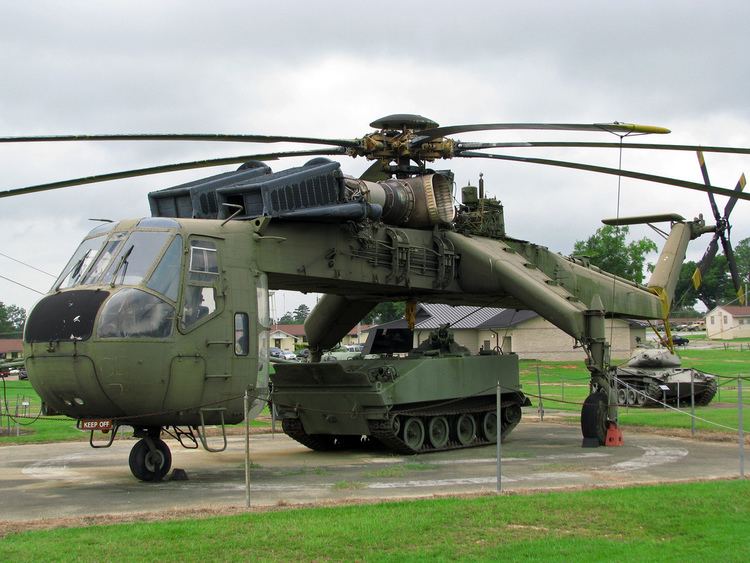
Development
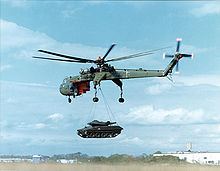
Initial work on the Sikorsky "sky-crane" helicopters began in 1958 with the piston-engined Sikorsky S-60. The first flight of the turboshaft-powered S-64 Skycrane was on 9 May 1962.
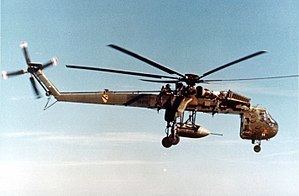
The United States Army eventually purchased 105, designating them CH-54. Used in Vietnam for transport and downed-aircraft retrieval, it was highly successful, thanks to the "adaptable" nature of the module system first conceived by General James M. Gavin in his 1947 book Airborne Warfare. Early pods could not carry troops and external sling-loads at the same time; later, pods that could carry both were developed but not acquired. As of 2014, it holds the record for highest altitude in level flight (11 km in 1971) and fastest climb to 3, 6, and 9 km.
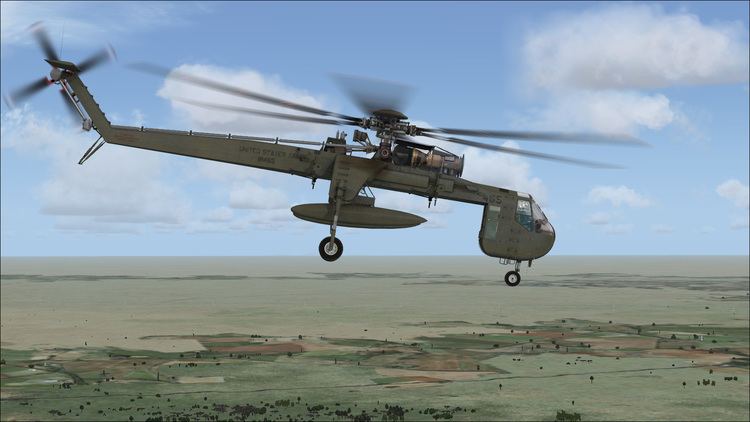
The Skycrane can not only hold its cargo up and tight against its center spine to lessen drag and eliminate the pendulum effect when flying forward, it can also winch vehicles up and down from a hovering position, so the helicopter does not need to land. Due to budget cuts, the Heavy Lift Helicopter (HLH) program was canceled and the CH-54s not upgraded with larger engines. The Boeing CH-47 Chinook gradually supplemented it in combat and eventually replaced it in Regular Army aviation units, although CH-54 Skycranes remained in Army National Guard service until the early 1990s.
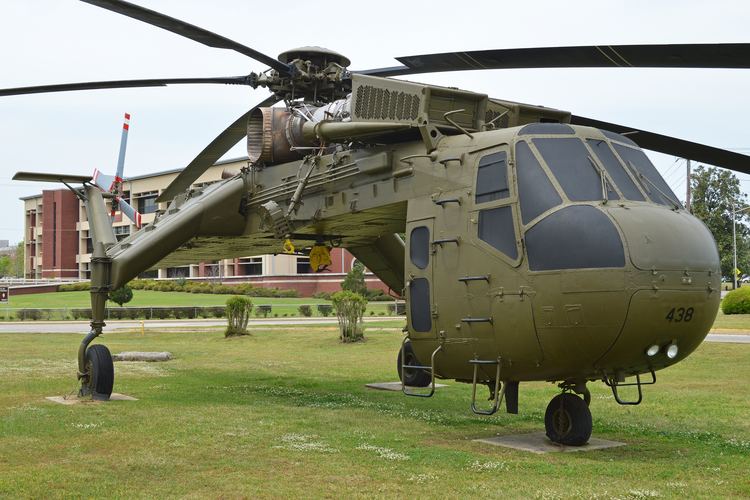
The Soviet Union also created much larger crane helicopters with a similar skeletal design, such as the Mil Mi-10.
Today, Erickson Air-Crane of Central Point, Oregon operates the largest fleet of S-64 helicopters in the world under the name Erickson S-64 Aircrane. These can be equipped with water-dropping equipment (some also have foam/gel capability) for firefighting duties worldwide. After obtaining the type certificate and manufacturing rights in 1992, Erickson remains the manufacturer.
Variants
Operators
Survivors
A large number of surviving airframes exist in flyable condition as well as in museum collections worldwide.
Specifications (CH-54B)
General characteristics
Performance
